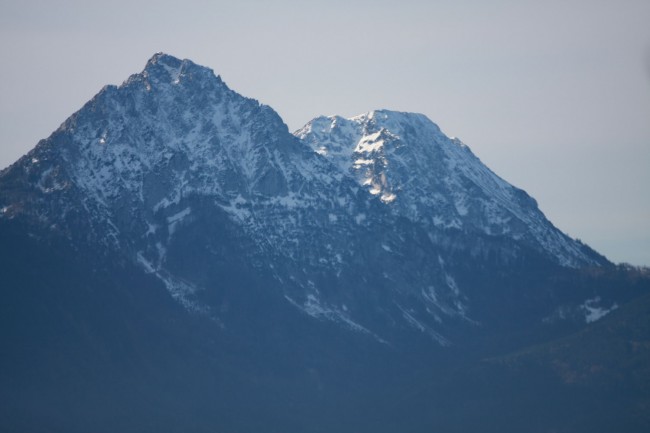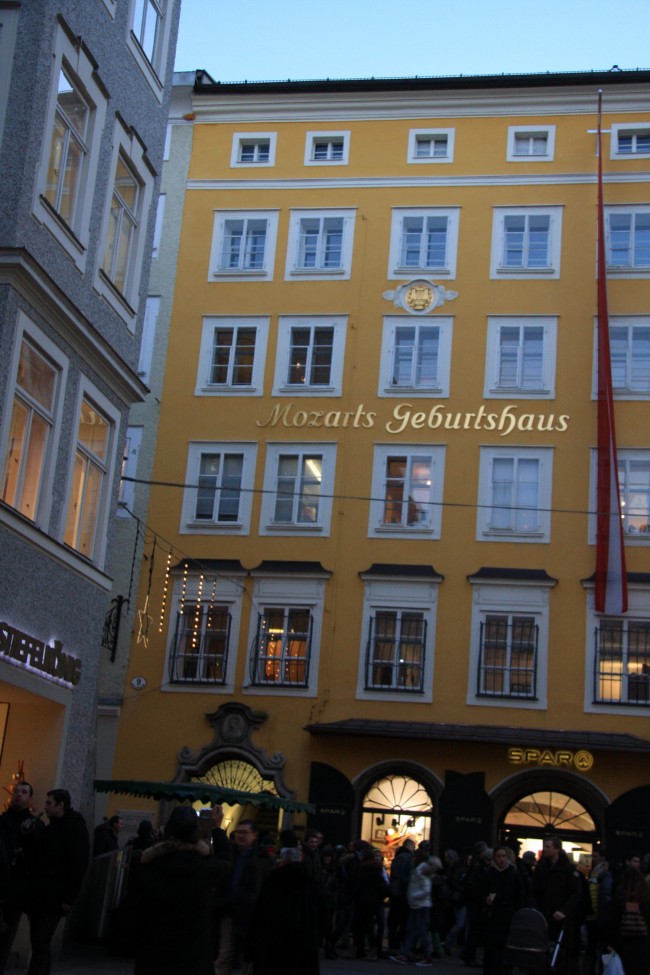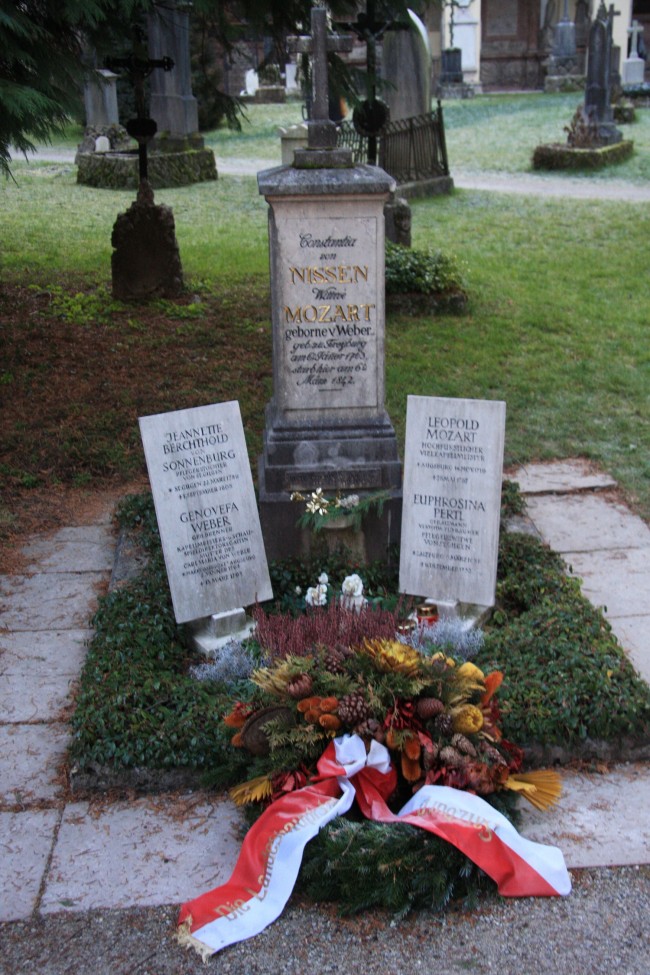It’s a crisp morning, the cloudless sky a bright blue with the sun’s warming ray’s beginning to bath the grass and flowers in St. Peter’s Cemetery melting the overnight frost as we stroll down the historic streets of Salzburg, Austria to the birthplace of one of the world’s finest composer’s Wolfgang Amadeus Mozart.
A centre for music, the annual Salzburg Festival draws thousands of visitors to its summer concerts, while others visit local landmarks associated with the early 1960’s Hollywood movie The Sound of Music. The movie Amadeus also draws visitors to this beautiful alpine city of 150,000 which attracts 6.5 million tourists a year.
Discussing with our 22-year-old son, Jonathan which segments of Amadeus were accurate and what was fantasy we reached Getreidegasse 9, the building where Mozart was born in 1756. While classical music wasn’t high on Jonathan’s list of ‘must do’s’ on our trip to Europe, he was fascinated in searching out and following the trail of Mozart’s memorials in Salzburg and Vienna.
Entering the building and climbing stairs to the third floor where the Mozart’s lived until 1773 we are impressed by the restoration of their apartment. A well laid-out museum, it depicts the life of the Mozart family with a remarkable selection of instruments, pictures and many of the apartment’s original features. The tour of the apartment is self-guided using audio headsets which are programmed for several languages and all signage is in both German and English. The rooms are displayed in period furnishings and the kitchen is setup as it would have appeared during Mozart’s lifetime.
A musical genius, it is here at the age of four Wolfgang began playing music. In awe we stand silently and gaze upon his pianoforte (a piano-like musical instrument) on which he composed almost thirty concertos. Even though it is off season the Mozart apartments are full with visitors, in hushed voices speaking several European and East Asian languages.
After a couple of hours we depart crossing the Salzach River via the Staatsbrucke (bridge) we took a short walk to the Makartplatz Wolfgang’s second home (wohnhaus) in Salzburg. He lived here until 1781 when he moved to Vienna while his father Leopold resided here until his death in 1787. The exhibits here focus to a greater degree on Leopold than on Wolfgang.

Hohensalzburg Castle, one of Europe’s largest medieval castle, provides stunning views of Salzburg and the Austrian Alps.
Unlike Wolfgang’s birthplace across the river, which is within the original building, the Makartplatz building was bombed during the Second World War and a complete reconstruction was only completed during 1996. Being from Toronto, to our surprise, part of the monies raised for the reconstruction came from the Mozart Society of Toronto.
In Salzburg no matter where you turn, you are reminded of Wolfgang beginning with the Salzburg Cathedral where Mozart was baptised, the bridge erected in his name, Mozartsteg, and not finally, the statue honouring his achievements in Mozartplatz by the Residenz Palace. While Mozart himself is buried in Vienna in St. Marx’s Cemetery in a communal grave, many of his family members are buried in Salzburg in St. Sebastian’s Cemetery. His father Leopold, his wife, Constanze along with her sister and Mozart’s first love, Aloisia Lange are buried here.
While we don’t believe Jonathan was listening to classical music on his iPod on our flight back home, we did take some pleasure in knowing that he perhaps did enjoy our little cultural adventure to Salzburg as he was reading a book on Mozart.
Written by Joseph and Diane Frey
Photo Credits
The Austrian Alps surrounding Salzburg – By Diane Frey
The gravesite of Wolfgang’s father Leopold and his wife Constanze – By Diane Frey
The entrance to Mozart’s Geburtshaus – By Joseph Frey
Hohensalzburg Castle – By Joseph Frey





Please Share Your Thoughts - Leave A Comment!